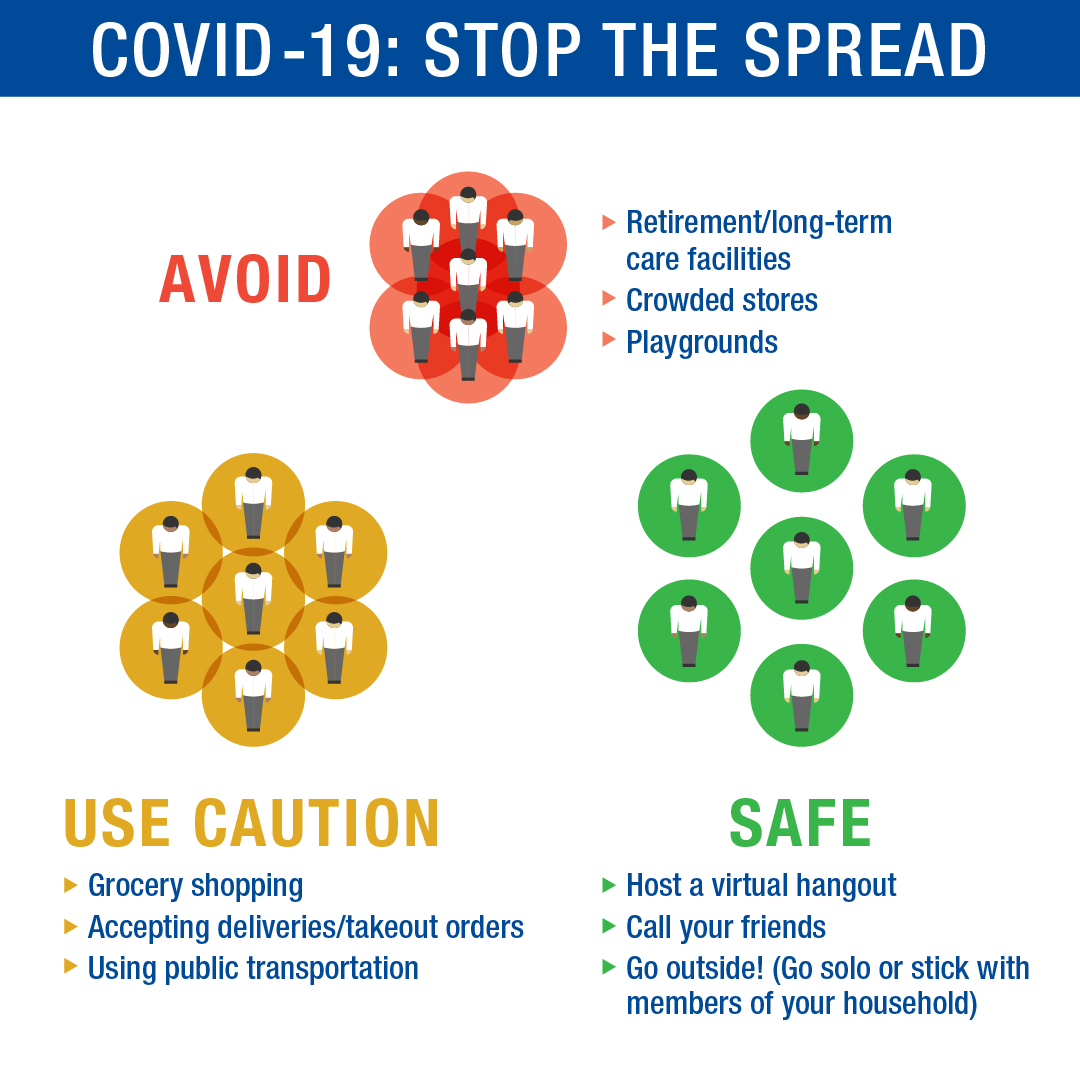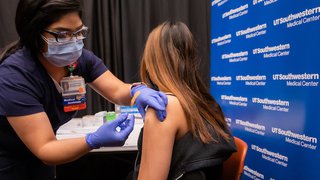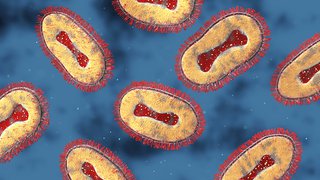Tired of social distancing? Try NPIs on for size
April 23, 2020

Most people had never heard of “social distancing” just a few weeks ago. Now it’s a household word, a punchline, and, in some cases, a punching bag. The world has most likely grown weary of being told about the importance of staying at least six feet away from others during the COVID-19 pandemic.
So, just for the sake of semantics, let’s shelve the term for a moment and try another one on for size: Nonpharmaceutical Intervention, or NPI for short.
The Centers for Disease Control and Prevention (CDC) has been developing NPIs for years to help individuals and communities slow the spread of pandemic illnesses, particularly those for which we haven’t yet built up an immunity and for which there is no vaccine.
In 2009, NPIs played a vital role in limiting and eventually slowing the spread of the H1N1 novel influenza virus. Decades before the CDC was founded (1946), U.S. public officials implemented NPIs during the 1918 flu pandemic. Cities that closed schools and businesses were able to recover more quickly, whereas cities like Philadelphia, which famously went ahead with a war bonds parade and other public gatherings, were devastated by infections and fatalities.
When it comes to COVID-19, NPIs remain the most effective way to reduce transmissions of the virus, and here’s why: From an epidemiological standpoint, it’s simple math. COVID-19 currently has a reproduction number (R0) of about 2.5, which means one infected person spreads the virus to 2.5 more people. By reducing an infected person’s exposure to others for about five days, R0 shrinks to 1.25; stay away for another five days and it decreases to .625.
So even as some states and cities consider relaxing restrictions, it’s important that individuals understand the power of NPIs and the role we all play in exponentially reducing the spread of COVID-19.
A closer look at NPIs
COVID-19 is a respiratory illness that is spread primarily between people who are in close contact (less than six feet) for a prolonged period of time. When an infected person talks, coughs, or sneezes, droplets from their mouth or nose are launched into the air at speeds of up to 100 mph. Those germs can eventually come to rest in the mouths or noses of people nearby. The pathogens can also land on surfaces and survive there for hours or days, depending on humidity, temperature, and airflow.
Clinical trials are under way to test several potential pharmaceutical treatments for COVID-19, and scientists around the world are working feverishly to develop a vaccine, but it could be at least a year before a vaccine is available. In absence of a medical treatment, NPIs – personal, community, and environmental – are our best defense.

Personal NPIs
These everyday preventive steps have become familiar during the pandemic; that’s because they work.
- Cover coughs and sneezes with your elbow or a tissue
- Regularly wash your hands with soap and water for at least 20 seconds; use hand sanitizer with at least 60% alcohol if soap and water are unavailable
- Stay home and away from others, particularly when someone in your house is sick
- Self-quarantine if you are sick
- Avoid gatherings of more than five people and stay at least six feet away from each other
- Wear a nonsurgical mask or cloth covering when in public spaces, such as the grocery store
When you consider that the average human sneeze sends about 100,000 contagious germs hurtling into the air, with some recent studies suggesting they can travel up to 27 feet depending on intensity, keeping your distance and following NPIs makes perfect sense.
Community NPIs
Local, state, and federal policies help limit the spread of COVID-19. They include:
- Closing schools and child care facilities, and restricting nonessential businesses
- Significantly restricting access to nursing homes and public transportation
- Limiting large gatherings, such as at places of worship, sporting events, festivals, conferences, etc.
- Social distancing, which includes shelter-in-place orders, essential/nonessential worker guidelines, recommendations for space between people, and limits on the size of public gatherings
- Separating infected individuals at hospitals and health care facilities
- Travel restrictions
- Recommendation to wear nonsurgical masks or cloth face-coverings in public
Environmental NPIs
Many essential businesses that have remained open during the pandemic, such as grocery stores, have implemented environmental NPIs, such as:
- Increased cleaning of frequently touched surfaces such as door handles, desks, and countertops (the CDC recommends you do this at home, too)
- Providing hand sanitizer and sneeze guards at checkout counters
- Some businesses have provided nonsurgical masks for employees, designated times for seniors to shop, and marked off six feet of space in lines to encourage social distancing among customers
- Health care facilities have instituted even more rigorous screening and cleaning procedures
A candid conversation about COVID-19 testing
UT Southwestern's Dr. Julie Trivedi, an infectious disease expert, is featured in the debut episode of 'What to Know,' hosted by Dr. John Warner, Executive Vice President for Health System Affairs. They discuss a range of topics, including COVID-19 testing, new mask protocols, and when life may begin to return to normal.
Staying safe and active in the age of NPIs
Nobody likes staying away from friends and family, sports and entertainment, work and school – the people and places that enrich our lives. But many people have shown resiliency in the face of COVID-19, finding safe and creative ways to stay safe, healthy, and forge stronger connections. Consider these suggestions:
1. Exercise outdoors and online: Social distancing doesn’t have to mean never going outside. Walking, running, and biking are great ways to stay physically and mentally fit. (So is yard work!) Just avoid getting too close to someone else while you’re exercising, avoid playing contact sports, and don’t go to a crowded gym to work out. Many exercise facilities are offering free online classes.

2. Grocery shop at off-peak times and alone if possible: Many grocery stores have refined their safety measures, regularly disinfecting cart handles, installing sneeze guards at checkout, limiting shoppers to allow for social distancing, and requiring staff to wear masks. So, grocery shop when you need food, and offer to shop for a neighbor, particularly if they are elderly or have an underlying condition making them more susceptible to COVID-19. You should also wear a non-surgical mask or cloth face-covering to reduce the spread of respiratory droplets.
3. Cook, share meals, date, and visit virtually: Many people have set up weekly dinner parties using video conferencing tools. Some are cooking together and swapping recipes. Others are going on dates online. The onset of COVID-19 symptoms can be gradual and mild – some people never know they have it – so virtual visits are much safer.
4. Support local businesses: Restaurants and retailers have adapted quickly to COVID-19, providing customers with contact-free curbside pickup and delivery options. Recent research has shown that food packaging and cardboard are not major modes of spread of respiratory infections, but if you are concerned wear gloves, dispose of the packaging, and then wash your hands.
5. Singing, sharing, and showing gratitude: People all over the world have embraced music as an antidote to social distancing, taking to balconies and porches to provide impromptu concerts for neighbors. Celebrities and karaoke singers have lifted spirits with online performances and parodies. And just recently, Dallas and Fort Worth organized “community ovations,” encouraging residents to step outside and show their appreciation for people working on the front lines against COVID-19.
How long will SD or NPIs last?
The first known use of the term social distancing was recorded in 2003, according to Merriam-Webster. But it was officially added to the dictionary in March 2020, along with COVID-19, coronavirus, and a few others that have helped define this pandemic.

Get important and helpful information during the COVID-19 crisis from UT Southwestern doctors on our MedBlog. Their stories cover topics range from stroke risk and respiratory illness progression to wellness and easy meals to boost your immune system.
The World Health Organization, sensing our collective exhaustion with social distancing, recently switched to calling it “physical distancing” in hopes of de-emphasizing its social isolation aspect.
Still, it’s only natural to wonder: When we will all of this end?
And the short answer is that social distancing will probably be with us longer than we’d like. Public health officials and physicians can’t provide a specific date when it will be safe to stop NPIs. We wish we could. But there are still too many unknowns surrounding COVID-19.
The ethics of social distancing are complicated, too. Communities and governments must find a balance between protecting citizens and slowing the spread of the virus and limiting the economic and social impact of mitigation strategies.
Nobody wants to be told how to live their life, which is why NPIs can feel disproportionate to the threat. But keep in mind that history has taught us two things:
- NPIs, given time, will work. They can also buy the scientific community valuable time to develop long-term medical solutions.
- Social distancing, by any name, is the best way we can all help stop the spread of COVID-19.
For more information about COVID-19 and UT Southwestern’s response, please visit utswmed.org/covid-19.











